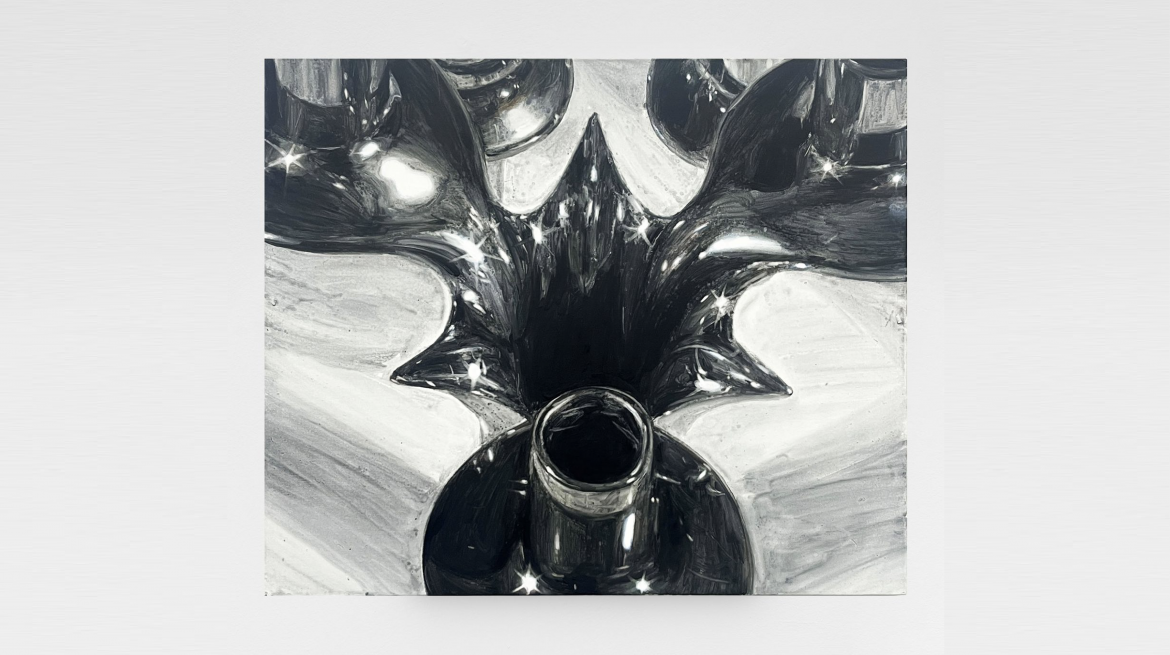
4 April - 25 May
Silva’s works, highly-stylised, appropriate the medium of watercolour, re-deploying its associated delicacy and liquidity within a visual language that speaks to uncertainty, memory and internal thoughts. The resulting granular distribution of paint, in tandem with the pigments employed, carry a certain softness: a sense of vulnerability as much as of nostalgia. Often featuring imagery pulled directly from films, video games or the internet, the paintings assume the guise of gamified landscapes or memories, appearing to suspend or filter reality. Through these compositions, Silva captures both the sensory experience and mediation of processing information, as it floods from the outside in, tethering his scenes to reality through the inclusion of small trinkets from his own life and recognisable environments.
These constructed realms function on an internal level, as well as a shared one. They offer a way of presenting or understanding situations and emotional responses; for Silva more easily conveyed to others through painting. The subjects of these snapshots – artificial bodies staring at or away from the viewer, incendiary, isolated landscapes, and small-scale personal items such as a music box – are fragmented moments or solaceful fantasies that have marked him or caught his attention, which he then stills across his canvases. Though they possess a cinematic quality, they are removed – or cropped – from whichever wider narrative they may have come, abstracting any ubiquitous lateral reading of them. Instead, they offer up multiple connecting threads and dual tensions to the viewer: tragedy and beauty; pain and joy.
The works meditate on and include reference to Marlene Dumas’s psychologically-charged watercolours, Frank Bowling’s use of thinned paint to instil freshness and vibrancy within his work, and Luc Tuymans’ examination of cultural memory. Silva also draws parallels between his own investigations and Vilhelm Hammershøi’s poetic interiors, as well as the Japanese practice of Kusôzu, which involves observing, through watercolour, the seven stages of a body’s decomposition. This latter exercise manifests in the work in a devolved fashion, in looser ponderings on mortality.
Catastrophic fires are a frequent motif – portrayed with fascination despite their destructive capacity. They’re symbolic of the conflicting tensions of such events, embodying both the potential for devastation and the promise of renewal. Prosthetics and dummies also appear frequently, vessels for reflecting on the human condition: the strangeness of corporeality, and the desire to understand and be victorious over this state. These recurring notions speak to a wider preoccupation with the paradoxical nature and ecstasy of the life drive, decay and the passing of time. Operating as screen-like interfaces, these surfaces display still-digesting events that pass within these spheres, their colours bleeding gently into one another as they mix into a cacophony of narrative emotion.
Sherbet Green, Unit 1, 2 Treadway St, London E2 6QW
Opening Reception: Thursday, 4th April, 18:00 to 20:00